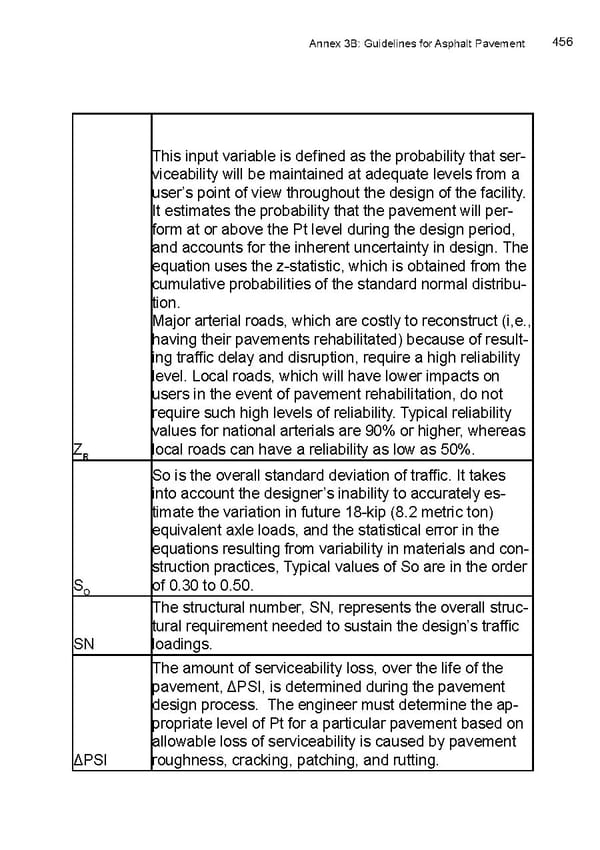Annex 3B: Guidelines for Asphalt Pavement 456 This input variable is deifned as the probability that ser- viceability will be maintained at adequate levels from a user’s point of view throughout the design of the facility. It estimates the probability that the pavement will per- form at or above the Pt level during the design period, and accounts for the inherent uncertainty in design. The equation uses the z-statistic, which is obtained from the cumulative probabilities of the standard normal distribu- tion. Major arterial roads, which are costly to reconstruct (i,e., having their pavements rehabilitated) because of result- ing traiffc delay and disruption, require a high reliability level. Local roads, which will have lower impacts on users in the event of pavement rehabilitation, do not require such high levels of reliability. Typical reliability values for national arterials are 90% or higher, whereas Z local roads can have a reliability as low as 50%. R So is the overall standard deviation of traiffc. It takes into account the designer’s inability to accurately es- timate the variation in future 18-kip (8.2 metric ton) equivalent axle loads, and the statistical error in the equations resulting from variability in materials and con- struction practices, Typical values of So are in the order S of 0.30 to 0.50. O The structural number, SN, represents the overall struc- tural requirement needed to sustain the design’s traiffc SN loadings. The amount of serviceability loss, over the life of the pavement, ΔPSI, is determined during the pavement design process. The engineer must determine the ap- propriate level of Pt for a particular pavement based on allowable loss of serviceability is caused by pavement ΔPSI roughness, cracking, patching, and rutting.
 LRM Manual CMGP Page 455 Page 457
LRM Manual CMGP Page 455 Page 457